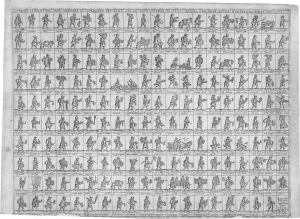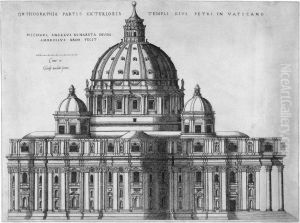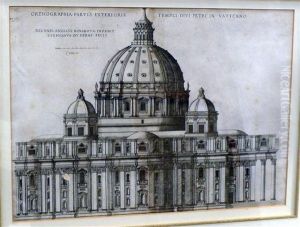Ambrogio Brambilla Paintings
Ambrogio Brambilla was an Italian engraver and printmaker who lived and worked during the late Renaissance period. He is believed to have been born around 1550, although the precise date and place of his birth are not clearly documented. Brambilla is often associated with the city of Milan, where he may have received his initial training and spent a significant portion of his career. However, details about his early life and artistic training remain largely speculative.
Brambilla's work as an engraver gained wider recognition when he moved to Rome, which was a significant center for the arts during the 16th century. In Rome, he became part of the vibrant artistic community and was likely influenced by the works of prominent artists of the time, such as the architect and printmaker Giovanni Battista Piranesi and the painter and engraver Cornelis Cort.
Brambilla's engravings are known for their intricate details and reflect the Mannerist style that was prevalent during his time. He produced a variety of prints that included religious subjects, allegorical scenes, and reproductions of famous paintings. Among his notable works are prints depicting the ceremonies and spectacles held in Rome, including the festive events and processions that were part of the city's cultural life. These works serve as valuable historical records of the pageantry and public celebrations of the period.
The artist also contributed to the documentation of contemporary and ancient Roman architecture. His engravings of architectural plans, elevations, and details were not only works of art but also served as informative sources for scholars and artists interested in the study of Roman buildings and ruins.
Ambrogio Brambilla's contributions to the field of printmaking were significant during his lifetime. However, like many artists of the period, his fame did not endure long after his death, and much of his life and work have fallen into relative obscurity. Brambilla is thought to have died around 1591, but as with his birth, the details of his death are also not well documented. Despite the scarcity of biographical information, his surviving prints continue to be appreciated by art historians and collectors for their technical skill and historical importance.


